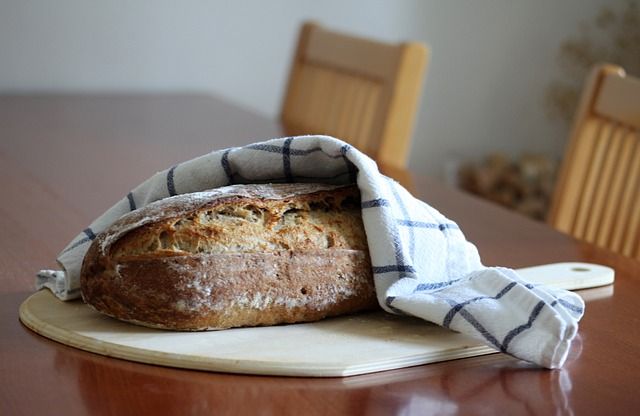Sourdough and its health benefits
Despite its existence dating back centuries, sourdough has now become a trend in baking and pastry making. In this article, you will find out exactly what this culinary practice is all about and what are the health benefits of its consumption.

Although its existence dates back centuries, nowadays sourdough has become a trend in baking and pastry making. Today you will learn exactly what this culinary practice is all about and what are the health benefits of its consumption.
Francisco Vásquez Lara, academic of the Coordination of Food Technology of Plant Origin of the Center for Research in Food and Development (CIAD), explained that sourdough is known as the ferment resulting from a mixture of flour and water that does not contain any type of added yeast. It is the flour itself with its yeasts and bacteria, which causes the fermentation of the dough in a spontaneous way.
The preparation of bread with sourdough is possible without using sugar, fat, oil, milk or butter, or other ingredients that are common in baking, although there are people who only add salt.
The coexistence of flour with water generates yeast and lactic bacteria that are beneficial for intestinal flora. In addition, there are studies that indicate that during the fermentation of sourdough a pre-digestion process of starch takes place, which means that the human body takes less time to process it. In addition, making dough with whole wheat flour facilitates better absorption of nutrients such as vitamin B1 (thiamine), B2 (riboflavin), B3 (niacin), B5 (pantothenic acid), B6 (pyridoxine), B12 (cobalamin), vitamin E, iron, magnesium, calcium, phosphorus, zinc, and potassium.
Another benefit of consuming bread made with sourdough is that the pre-digestion process of starch by fermentation lowers the glycemic index, making it a good food option for people who are watching their sugar intake due to conditions such as diabetes.
Method of preparation
To prepare sourdough, it is recommended to use whole wheat flour (free of fungicide treatments), since in this type of flour a load of yeast and bacteria is higher. Any cereal can be used, such as rye, wheat, oats, corn, rice, etc., since the important thing is the starch contained in the different flours. The recommended method of preparation is as follows:
Put one tablespoon of whole wheat flour and two tablespoons of drinking water in a clean, clear glass jar.
Mix both ingredients until a porridge consistency is prepared.
Seal the jar with a lid and let it stand for twenty-four hours at a temperature between 25 to 28 °C and preferably in a place with no light.
After the twenty-four hours, the mass contained in the jar should be stirred for a few seconds with a clean spoon (homogenize the mixture) and let the jar stand covered again for another full day.
On the third day, add one tablespoon of flour and two tablespoons of water, mix well and cover again, leaving it to rest for another full day at the same temperature conditions as mentioned above. This process is known as refreshing the dough.
For the following days the same process as the previous step is carried out, that is to say, add flour, water, mix and cover the container and let it rest for twenty-four hours. The same can be done on days 4, 5, 6, or 7. The days necessary to achieve the maturation of the sourdough.
The sourdough will be mature when, when refreshing the mixture, the sourdough is able to raise the volume of the dough to double or more of the one observed in that same day of the refreshing. This volume should be reached in one, two, or three hours.
In this step, fast and regular fermentation is observed. At this moment we can say that our sourdough is ready to be used in baking.
Note: the quantities of flour and water mentioned for the preparation of sourdough can be proportional to the quantity of sourdough to be used in baking.
Bread made with sourdough is distinguished by a more acid taste; its texture is improved by its honeycombing and its crust is a little thicker. It is characterized by longer conservation in a natural way due to the acetic acid produced in its elaboration, which inhibits the growth of mold.
Now you have an excellent option to include more nutritious food in your diet and reduce the consumption of ultra-processed products. You just need to add a little gastronomic creativity to make your own inventions.
Author: Francisco Vásquez Lara, researcher of the Coordination of Plant-Based Food Technology at CIAD.




